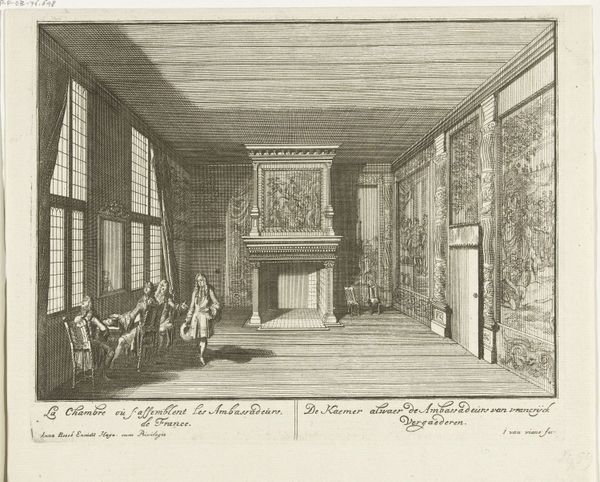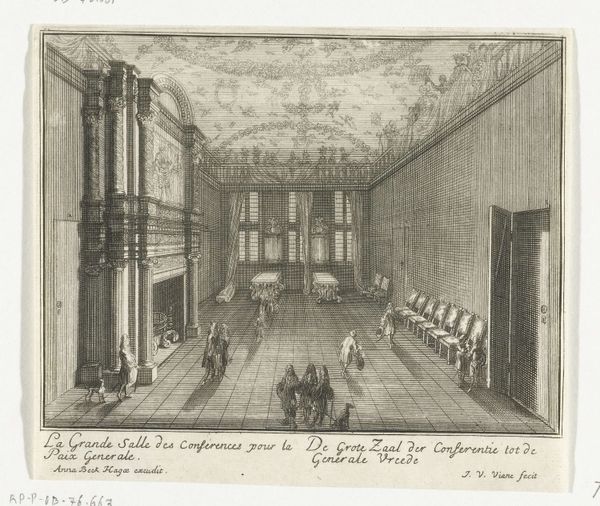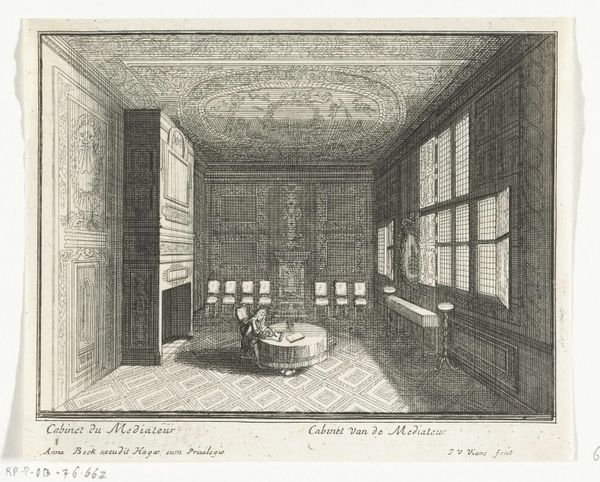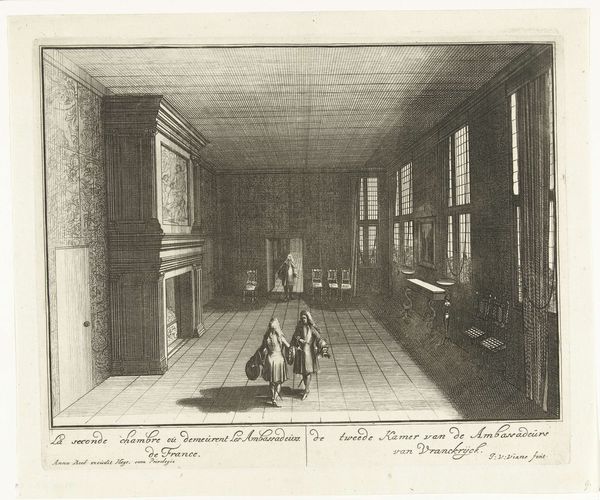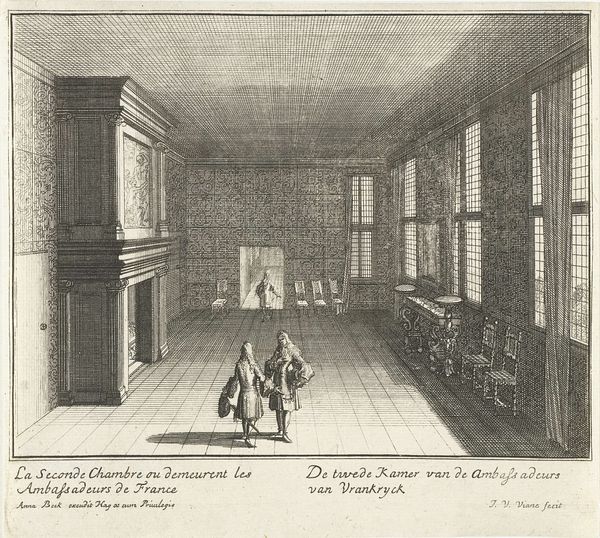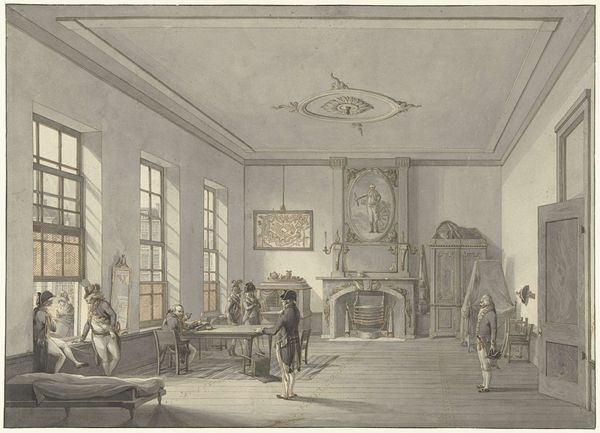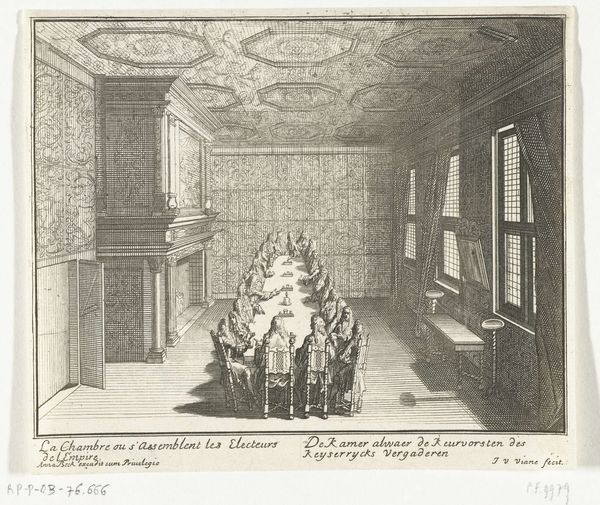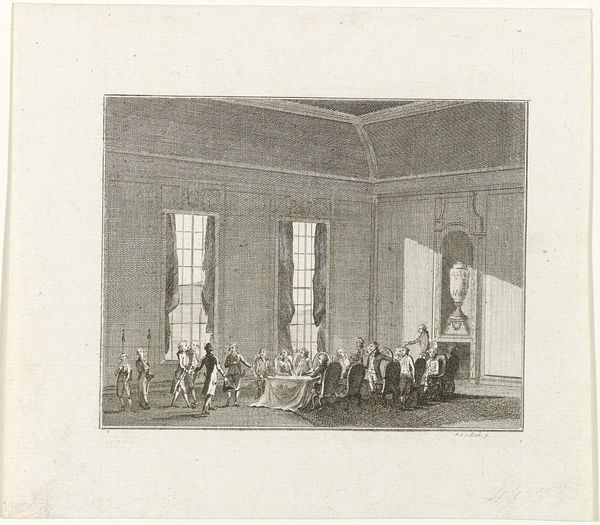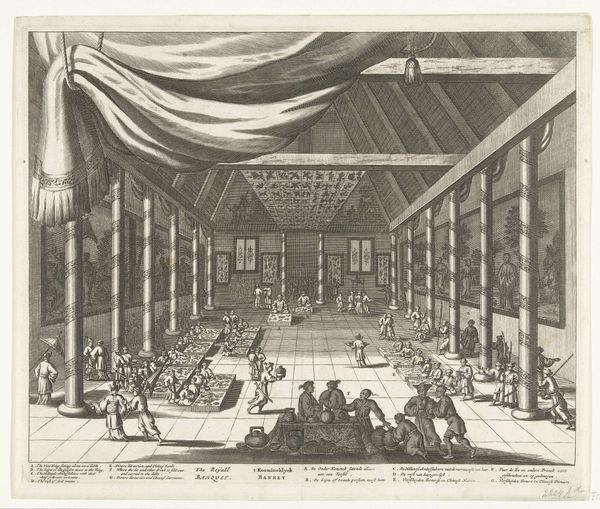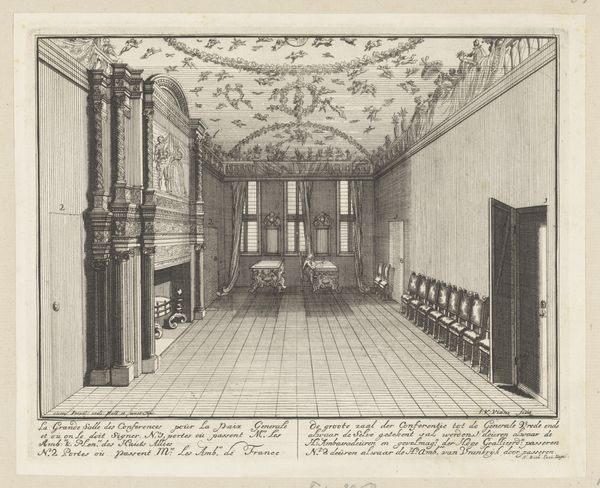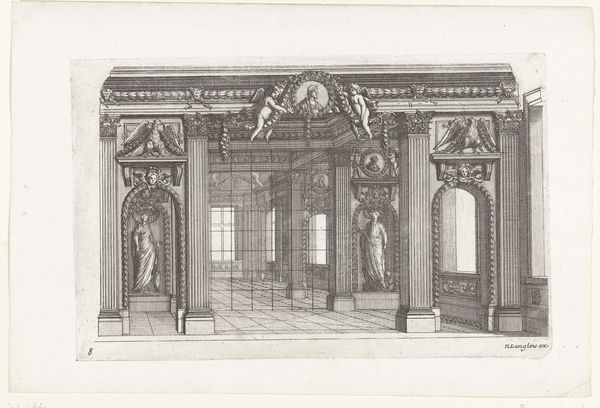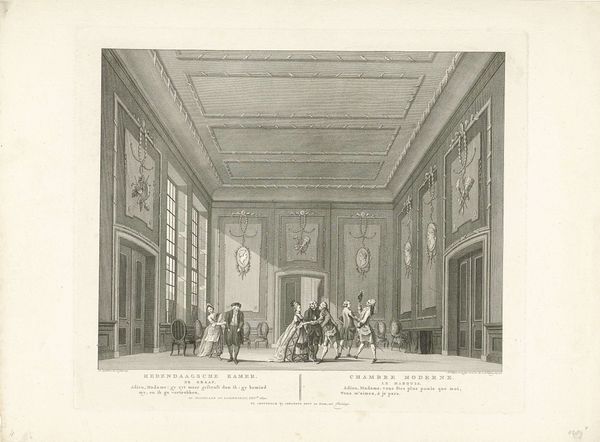
Kamer van de Franse ambassadeurs in het Huis ter Nieuburch in Rijswijk, 1697 1697
0:00
0:00
print, engraving, architecture
#
baroque
# print
#
cityscape
#
history-painting
#
engraving
#
architecture
Dimensions: height 135 mm, width 164 mm
Copyright: Rijks Museum: Open Domain
Curator: Welcome. Before us hangs Jan van Vianen's engraving from 1697, "Kamer van de Franse ambassadeurs in het Huis ter Nieuburch in Rijswijk, 1697," housed here at the Rijksmuseum. Editor: Ah, what a meticulously rendered room! It’s almost austere despite the rich details... like a stage set waiting for a drama to unfold. I immediately sense a weightiness to this space, maybe because it feels so self-contained. Curator: Indeed. Van Vianen masterfully employs linear perspective, drawing our eye deep into the composition. Note the interplay between the stark architecture and the elaborate tapestries—the contrast invites us to decode its layered meanings. Consider how Baroque aesthetics inform the work’s grandeur while remaining confined to this medium. Editor: Yes, there's a captivating tension here. All those tiny, precise lines building up the illusion. The tapestry-covered walls could almost whisper stories. Yet, paradoxically, everything feels incredibly still and almost hushed—as if holding its breath before making history. I mean, who are these people gathered here? They seem oblivious to everything outside those towering windows. Curator: That is precisely what gives this interior such depth. They would be the French ambassadors convening within the Huis ter Nieuburch in Rijswijk during the negotiations of 1697, a pivotal event for European politics at the time. Editor: And there’s this distinct Dutch light spilling in! Yet, for me, it’s almost mournful. Does that sound odd? All these crucial negotiations about to happen, etched with such dedication, and I'm stuck on that sliver of grey light falling on the floor. Maybe I am thinking too literally, though! Curator: Perhaps, or it points towards the temporality of power, even amidst the illusion of permanence that Baroque aesthetics suggest. The engraving functions as both document and constructed reality, each feeding off the other. Editor: Well said. So it becomes a study, really, not just of diplomacy or interior space, but also of time itself... suspended and charged. Curator: Exactly. Through its formal devices and historical context, Jan van Vianen has offered a timeless exploration of power, space and transience. Editor: Which really makes one think, doesn't it? Not bad for a humble little engraving.
Comments
No comments
Be the first to comment and join the conversation on the ultimate creative platform.
